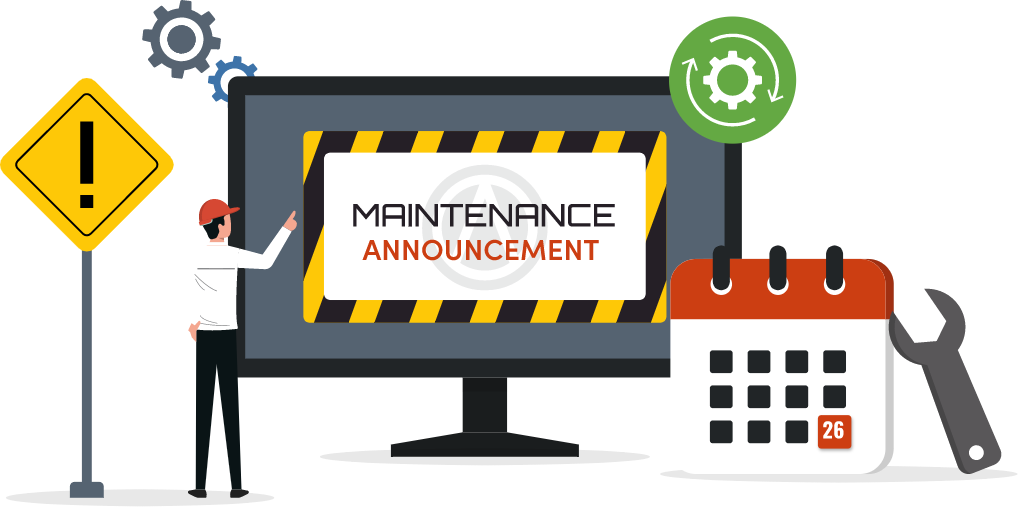How do you select the right automation tools and vendors?
To select the right automation tools and vendors, evaluate integration ease, scalability, and vendor reputation. Consider cost-effectiveness, industry-specific features, customer support, and future growth compatibility to ensure the solution aligns with your organization's needs and long-term goals.
Building a Business Case for Automation in Your Organization
Overview
As businesses face increasing pressure to improve efficiency, reduce costs, and stay competitive, automation has become a critical strategy for success. However, implementing automation often requires a significant investment of time, resources, and budgetfactors that demand a solid business case to gain organizational buy-in.
Building a compelling business case for automation involves demonstrating how it can transform operations, deliver measurable benefits, and align with organizational goals. Here's a step-by-step guide to creating a persuasive business case for automation in your organization.
1. Identify the Problem or Opportunity

Start by clearly defining the problem automation will solve or the opportunity it will create. This could include -
-High labor costs due to repetitive manual tasks.
-Inefficiencies or bottlenecks in current workflows.
-Inconsistent customer experiences or slow service delivery.
-Opportunities to scale operations or enter new markets.
Example - "Manual invoice processing consumes 30 hours per week, leading to delays and errors that cost the organization $20,000 annually."

Process Your Invoices and Make Payments to Vendors
Automate, Integrate, Dominate with Altametrics
2. Outline the Goals of Automation
Establish clear, measurable goals to show how automation will address the identified problem or opportunity. Goals may include -
-Reducing operational costs.
-Improving accuracy and reducing errors.
-Enhancing employee productivity.
-Increasing customer satisfaction or retention.
Example Goals -
-Reduce invoice processing time by 50%.
-Save $15,000 annually by minimizing data entry errors.
-Improve team efficiency by reallocating 30 hours weekly to higher-value tasks.
3. Highlight Potential Benefits
Demonstrate the tangible and intangible benefits of automation. These may include-
Tangible Benefits -
Cost Savings - Reduced labor, error correction, and material costs.
Revenue Growth - Faster service delivery and improved customer satisfaction.
Time Savings - Faster completion of routine tasks.
Intangible Benefits -
Improved Employee Satisfaction - Reduced workload on repetitive tasks.
Enhanced Decision-Making - Real-time data insights for strategic decisions.
Scalability - Easier adaptation to growth or market changes.
4. Provide Supporting Data

Use data and real-world examples to strengthen your case. Include -
Current Costs - Labor costs, error rates, or inefficiencies in manual processes.
Industry Benchmarks - Data from competitors or market leaders successfully using automation.
Projected ROI - Calculate the return on investment by comparing costs and expected savings.
Example ROI Calculation -
-Annual cost of manual process - $40,000.
-Cost of automation implementation - $15,000 (one-time) + $5,000/year (maintenance).
-Annual savings post-automation - $30,000.
-ROI within the first year - 100%.
5. Address Potential Challenges
Acknowledge potential risks and challenges of automation, such as -
Initial Costs - Upfront investment in tools, training, and integration.
Employee Resistance - Fear of job loss or unfamiliar technology.
Implementation Time - Temporary disruption during rollout.
Propose strategies to mitigate these risks, such as phased implementation, training programs, or clear communication about the benefits for employees.
6. Identify Key Stakeholders
Determine who will benefit from automation and who will be involved in the decision-making process. Tailor your case to address the priorities of -
Executives - Focus on ROI, scalability, and strategic alignment.
Managers - Highlight productivity gains and process improvements.
Employees - Emphasize reduced workload and opportunities for skill development.
7. Select the Right Tools and Vendors
Research and recommend automation tools that best meet your organization's needs. Consider -
-Ease of integration with existing systems.
-Scalability for future growth.
-Vendor reputation and support.
8. Create an Implementation Roadmap
Outline the steps for implementing automation, including-
-Initial assessment and tool selection.
-Training programs for employees.
-Pilot testing and feedback collection.
-Full-scale deployment and ongoing support.
Timeline Example -
Month 1 - Evaluate processes and select tools.
Month 2,3 - Pilot implementation and adjustments.
Month 4 - Full deployment and team training.
9. Showcase Long-Term Impact
Demonstrate how automation aligns with long-term organizational goals, such as -
-Supporting growth strategies.
-Enhancing competitiveness in the market.
-Building a resilient and future-proof business.
10. Deliver a Clear and Concise Presentation
Finally, compile your business case into a presentation that clearly communicates-
-The problem and goals.
-Benefits and ROI.
-Implementation plan and timeline.
-Risk mitigation strategies.
Use visuals like graphs, charts, and case studies to make your argument compelling and easy to understand.
Conclusion
A well-crafted business case for automation can transform skepticism into enthusiasm and secure the support you need to move forward. By highlighting the measurable benefits, addressing challenges, and aligning automation with organizational goals, you can position your organization for greater efficiency, growth, and success.
Focus on how automation will enhance rather than replace human capabilities and emphasize the strategic advantages it brings to the organization's competitive position. With proper planning and execution, automation can transform operations while delivering significant value to all stakeholders.
Simplify Invoicing Process with Automation
Streamline Your Accounting System with Altametrics


How to Build Engaging Customer Loyalty Programs for Restaurants



How to Track Time Accurately for Hourly Restaurant Staff




Are You Following US Labor Laws in Your Restaurant?

How to Design High End Restaurant Loyalty Programs

The Essential Steps Involved in Sales Forecasting for Restaurants

The 6 Types of Inventory Management Reports for Restaurants

Essential CCP Food Handling Procedures Every Restaurant Must Follow

The Complete Guide to Efficient Employee Scheduling for Restaurants

The Different Methods of Sales Forecasting for Restaurants

What are the four types of inventory management for restaurants?

Daily Cash Control Checklist for Restaurant Owners



Top Inventory Management Strategies for Restaurants

Food Safety Standards Every Restaurant Owner Must Know in 2025

How to Build a Restaurant Inventory Management Process from Scratch


The Complete Guide to Restaurant Waste Management for Owners


5 Signs Your Hotel Needs to Upgrade Its Payment Processing System

The Ultimate Daily Checklist for Restaurant Owners

Are You Over-complicating Your Restaurants Payroll Process?


How Can Smart Scheduling Transform Your Restaurant's Efficiency?

What Are the Best Email Marketing Campaign Ideas for Restaurants in 2025?

How Can You Maintain Brand Consistency Across Multiple Franchise Locations?

How Can Restaurants Prevent Scheduling Conflicts and Last-Minute Absences?

What's the Most Efficient Way to Manage Tasks in a Busy Restaurant?

What Should You Look for When Interviewing Restaurant Staff?

What Is a Dram Shop Law and How Does It Affect Your Restaurant?

What Features Should Every Restaurant Ordering System Have in 2025?

What Are the Most Cost-Effective Ways to Reduce Waste in a Restaurant?

Are Your Menu Items Costing You More Than They're Worth?

How Do You Handle Overtime and Tip Credit in Restaurant Payroll?

Are You Spending Too Much Time on Payroll? Here's How to Fix it

How Can I Implement an Effective Inventory Management System in my Restaurant?


What Are the Main Inventory Costing Methods for Restaurants?


How to Optimize Order Fulfillment in Your Restaurant

How to Design an Effective Employee Training Program for Restaurants

9 Essential Workforce Management Tools Every Restaurant Needs

How to Read and Use Your Restaurants Profit and Loss Statement

How to Organize Your Restaurant's Financial Records Efficiently

Restaurant Billing 101 - Simplify Your Finances and Boost Efficiency

The Ultimate Guide to Accounts Payable Automation for Restaurant Owners

Benefits of Accounts Receivable Automation for Restaurants


Restaurant Bookkeeping 101 - A Beginner's Guide for Restaurant Owners

Invoice Management 101 - A Simple Guide for Restaurant Owners

What Are Par Levels and Why Every Restaurant Owner Should Care


5 Simple Ways to Speed Up Accounts Receivables Collections in Your Restaurant

Which Inventory Method is Best for Your Restaurant?

Setting Up an Employee Loan Program in Your Restaurant


The Ultimate Employee Onboarding Checklist for Restaurant Owners

Top 7 Payroll Mistakes Restaurant Owners Should Avoid

How to Calculate Food Cost Variance in Your Restaurant

A Guide to Understanding Customer Behavior in Restaurants

Top 10 California Employment Laws Every Restaurant Owner Must Know

How to Create Custom Recipe Templates for Your Restaurant Kitchen

10 Smart Ways To Use Food Handling Gloves To Ensure Kitchen Safety

What to Look for When Selecting a Bluetooth Wireless Meat Thermometer

Essential Food Safety Regulations Every Restaurant Must Follow in 2025

5 Practical Strategies to Cut Food Waste in Your Restaurant

Understanding Restaurant Food Cost Percentage in 2025 - Strategies for Profitability

Top 7 Food Safety Organizations You Need to Know About in 2025

The Restaurant Owner's Guide to Streamlining Supply Chain Processes

How to Efficiently Calculate and Manage Labor Cost in Restaurants



Key Elements of a Successful Restaurant Scheduling System

How to Reduce Labor Costs in Your Restaurant Without Sacrificing Service

5 Best Practices for Food Inventory Management to Reduce Waste

Understanding California Overtime Laws for Restaurants

Top Features to Look for in an Electronic Time Clock for Restaurants

The Best Employee Rewards Programs for Restaurants


How a Restaurant Scheduling App Helps You Avoid Common Scheduling Mistakes

Features to Look for in a Clock-In Machine for Restaurants
How to Improve Time and Attendance Tracking in Your Restaurant

How California Work Week Laws Affect Restaurant Scheduling

Best Practices for Calculating Payroll Hours in Restaurants


How Technology Can Improve Employee Management in Restaurants

California Employment Laws Every Hotel Owner Should Know in 2025

California's Updated Overtime and Break Laws for Restaurants

10 Essential Work Schedules for Running a Smooth Restaurant Operation

How to Accurately Calculate Work Hours for Your Restaurant Staff

Best Practices for Managing Employee Time and Attendance in Restaurants

How to Create an Efficient Restaurant Weekly Schedule That Boosts Productivity

Top 5 Benefits of Automating Your Business Workflows


The Power of API Integrations - Connecting Your Business Tools Seamlessly

The Importance of Seamless Integrations in Today's Business Landscape

How Workflow Automation Can Save Small Businesses Thousands of Dollars

How Any Connector Simplifies API Integrations for Your Business

Empowering Your Employees with Automation- A Win-Win Strategy

Building a Business Case for Automation in Your Organization

Automation in Hospitality - Streamlining Guest Experiences

5 Ways Restaurants Can Leverage Automation for Operational Success


The Ultimate Guide to Accurate Inventory Counting in Restaurants


How to Effectively Reduce Expenses and Increase Staff Engagement in Your Restaurant


How to make sure you will always meet labor goals before you run payroll

How to reduce labor costs without retraining your management team.

How to clone a proven employee scheduling system your managers will love without hiring expensive consultants.

3 top reasons your managers should always earn their bonuses

How to guarantee your franchise technology rollout will be a success

How to reduce labor costs by 3-5% without ever using an excel spreadsheet again


Why your IT team has to provide better mobile apps for you to stay competitive

How to streamline your business operations test for maximum efficiency

How to make sure your technology projects are on time and on budget

Why employee engagement and retention are the keys to improving profitability

The easy way to write great employee schedules

How to manage your restaurant inventory planning to ensure you're never caught short


5 Basic Inventory Management Tips That Can Save You Money

Top 3 Reasons Why You Need Cloud-Based Inventory Management Software

The Best Food Service Management Companies in the Industry



7 Tips for Choosing the Best Restaurant Directory Software



Top 11 Types of Food Safety Labels- Know the Difference to Protect Yourself





10 Inventory Management Stock Control Tips For Your Business



The Benefits of HR Software Reporting For Professionals

5 Top HR Software Solutions To Consider For Your Business


Tips for Retaining Hourly Restaurant Employees

Hurdles That Keep Restaurant Chains From Becoming The Employer Of Choice


Why You Should Start Using Restaurant Payroll Software


How To Make The Most Out Of Your Simple Inventory Management Software

Food Waste Management- 6 Strategies to Reduce the Impact of Food Waste



The Average Restaurant Food Cost Percentage & What You Can Do About It


Inventory Management Best Practices- A Guide to Controlling Your Inventory

How to Choose the Right Restaurant Dashboard Software for Your Needs

Five Ways That Food And Safety Come Together For Great Benefits



5 Free Inventory Management Tools for Small Businesses


3 Ways You Can Get Your Employees to Love Cloud-based HR and Payroll Software

5 Ways to Improve Your Multi Channel Inventory Management

5 Tips for Food Safety and Sanitation- What You Need to Know


What You Need to Know About Food Safety Issues and How To Prevent Them



The Best Restaurant Point of Sale Software for Your Business

The Best Restaurant Loyalty Programs- Which One Is Right for You?


9 Loyalty Program Ideas for Restaurants That Will Make Your Customers Come Back

The Best Inventory Management Software- The Ultimate Guide


Top 5 Best Bluetooth Meat Thermometers- Powering Up Grilling and Smoking


The Best Free Employee Scheduling Apps to Help Your Business Run Smoothly


Food Safety Temperature Chart- Safe Temperatures for Cooking and Storing Food?

Danger Zone Food Safety and How to Keep Your Food From Spoilage

5 Tips for Choosing the Best Kitchen Equipment Supplier

Mobile Device Inventory Management- A Guide to Help You Do It Right

Food Safety Rules You Should Always Follow to Keep Your Family Safe




4 Steps to Food Safety - How to Stay Safe and Avoid Food Poisoning


What To Eat? The FDA Food Safety Reforms You Need To Know About

Top Free Inventory Management Software for Small Businesses




4 Types of Inventory Management Systems and How They Affect Your Business


HR Recruitment Software- Why Restaurant Chains Fail To Become Preferred Choice

Food Waste Management Solutions- The Ultimate Guide to Eliminating Food Waste

HR Software Solutions- Tips For Retaining Hourly Restaurant Employees



How Restaurant Food Suppliers Are Important To A Business


What Are The Best Restaurant Paper Goods Suppliers?

The Ultimate Guide to Inventory Management Techniques


5 Questions to Ask Yourself Before Hiring a Food Service Management Company

Ordering Management System- Issues Faced by Multi-Chain Restaurants In 2022


The Food Safety System Management- How To Optimize Your Process

The Best Employee Time Clock Machines for Your Business


The Top 5 Reasons to Switch to Cloud Based HR Software

Our Top 5 Best Employee Scheduling Apps For Small Businesses



Food Manual Handling- What You Need to Know and Why It Matters

Best POS System For Restaurant- What To Look Out For and Things To Consider

8 Tips for Successful Financial Management In Food Service

5 Tips for Improving Your Data Integration Software

America's Fastest Growing Restaurant Chains That You Probably Haven't Heard Of

The Best Employee Shift Planning Manager | Employee Scheduling & Shift Planning

Free Employee Time Clock to Give Your Business a Competitive Edge


HR Timesheet Software- What To Look For and How It Works

Tracking Time Effectively- The Best HR Time Tracking Software


Supply And Demand Management- The Best Ways To Manage Your Supply Chain.

Employee Data Technology- How This Trend is Transforming Your Organization.





















